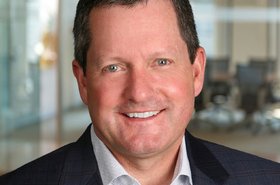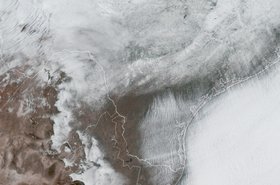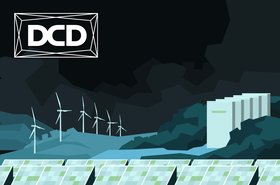February saw millions in Texas suffering power cuts, as Storm Uri brought temperatures down as low as -7.6°F (-22°C). Data centers in the state had contingency plans, but they were dealing with a local electricity grid that had not been sufficiently "winterized", leading to 30GW of mostly gas generation going offline.
With rolling outages enacted across the state, 4.5 million homes and businesses were left without power. Operators switched to diesel backup, but some struggled, including Florida health care provider Availity, which lost its data center for 11 hours, and Austin's city data center, which also suffered downtime.
A more challenging grid to manage
When a disaster causes effects this extreme, it's tempting to leap to a simple explanation, but it's actually down to a multitude of factors, according to Allan Schurr, Chief Commercial Officer at Enchanted Rock: “It's a very long list [of causes]. I've tallied about a dozen or so factors that contributed. With all these things coming together, the grid has become more challenging to manage, given these kinds of outlier weather conditions, which by themselves are growing through climate change.”
While Texas coped with the aftermath, Schurr was speaking on a DCD panel in February about energy and security, which made it clear that this issue will be discussed beyond trade publications and conference sessions, into the wider public arena. Assaid:
“For the first time, the conversation we're all having here - and I want to make sure everyone hears this from me - is hitting the mainstream," said Bill Kleyman, Executive Vice President of Digital Solutions at Switch. "People who aren't necessarily in a datacenter/power generation industry, are talking about the grid, they're talking about batteries, they're talking about generators, they're wanting to make sure that this does not happen again.”
The last major upgrade to power infrastructure in the US was more than 50 years ago in the 1960s, said Kleyman. Private industry will have to take the initiative, he said, pushing for solutions because the US government has been lackadaisical in instigating the necessary investment.
Diesel may have kept most data centers operating, despite the power cuts, but its role must be in question, said Drew Thompson, Associate Vice President, Data Center & Mission Critical Facility Solutions, at Black & Veatch: “Who would have thought, when we are talking about resilience, we’d be talking about diesel? We always assumed that diesel would be there and be available, but they're trying to fill diesel trucks and the power's out. So the pumps aren't working.
“I mean, when we talk about resilience … the whole Texas tragedy has increased our awareness that there are a lot of things that play into that.”
All three panellists had much to say about February's sobering events, but we’ll leave the last word with Schurr: “I think that the Texas experience last week really revealed so much disagreement about what it's going to take to fix the grid in a way that avoids these kinds of issues. And remember, this is just one kind of threat vector to the grid - a very deep cold snap. There's so many other threats out there on the grid.”
And if the US can't handle a brief spot of cold weather, what does that say about its preparedness for anything worse?
Watch the full panel discussion, "Panel: How can data center decarbonisation and resilience evolve in parallel?", on-demand:
Further reading
-

Sponsored Going beyond compliance: When compliance alone is not enough
Data center diesel back-up hasn’t changed for more than 20 years, but there is a better way that should satisfy everyone
-

Sponsored Data center clean energy: let’s finish the job
Allan Schurr, CCO of Enchanted Rock, contributed to this article
-

Texas power outages bring Austin city data center offline
As well as leaving thousands without power amid freezing temperatures

